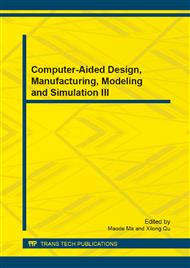p.3
p.7
p.12
p.18
p.22
p.27
p.31
p.35
Comparison between the Generative Computer Approach and the Traditional Design Approach in the MRHC with Parallel Layout
Abstract:
This paper attempts to explore the application possibilities of a author programmed multi-agent system in a residential cluster layout in Beijing which was originally designed by the traditional approach. The author analyzed and evaluated the layouts with three environmental indices: relation with road, relation with green land, location in the building. The solution showed that the computer could generate the well performed layouts which could still be improved by the traditional approach. The cooperation of these two approaches can make the design process efficient, digital evaluated, controllable, aesthetic and creative.
Info:
Periodical:
Pages:
7-11
Citation:
Online since:
October 2013
Authors:
Price:
Сopyright:
© 2014 Trans Tech Publications Ltd. All Rights Reserved
Share:
Citation:


